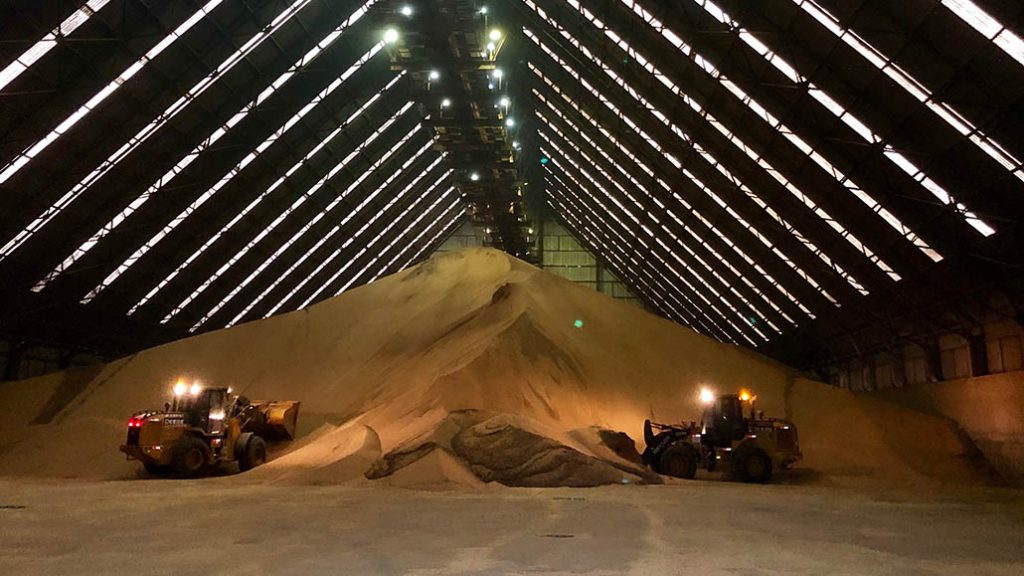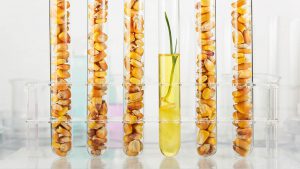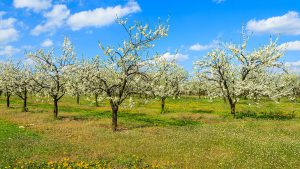Brazil’s case for sustainability

GLOBALLY, YOU CAN’T talk about soybeans and corn without talking about Brazil. Soybean exports from this vibrant South American country of 210 million people were virtually nothing 40 years ago. But now it’s the world’s leading exporter, commanding 43 per cent of the world’s export market. Almost one-third of the world’s soybeans are produced there. The country has won the right to be at least a little smug about its success.
But that’s not the case. After a week visiting Brazilian farms and agribusiness, there’s no sense of entitlement anywhere, despite the country’s exalted status. The agriculture sector admits to having problems, including image woes over deforestation of the Amazon rainforest. However, farmers and spokespeople overwhelmingly exude confidence and optimism, and speak repeatedly about further growth.
WHAT YOU NEED TO KNOW
|
And why not, asks Regis Prunzel, Santos-based ports manager for the TEG group of companies, a coming together of industry giants Cargill and Louis Dreyfus. TEG is firmly into the first year of a huge four-year, US$110-million expansion at Santos facility (about 90 minutes from Sao Paulo), the world’s fifth busiest grain-exporting port. He proudly notes that in 15 years the country went from producing 40 million tonnes of soy to more than 110 million tonnes, and its total grain production for this year is forecast to hit nearly 238 million tonnes.
“That’s all with private investment, no government assistance,” says Prunzel, matter-of-factly. “We feel confident about the future.”
FUTURE GROWTH
That confidence is understandable, given the production statistics. But the future could still be a house of cards, at least as far as export markets go, if Brazil is not committed to sustainability and transparency. Europe, for one, is having regular and serious debates about limiting trade with countries like Brazil if they disregard the environment and violate international sustainability pacts.
Prunzel and others — including recently elected president Jair Bolsonaro — know it. They’re highly attuned to the fact the country is under the microscope, particularly with regards to agricultural land development. Bolsonaro, who is sometimes called Brazil’s answer to Donald Trump, has definite pro-development views. But he’s also aware that Brazil must be sensitive to the rest of the world’s expectations, which Brazil has failed to meet.
It is estimated that 20 per cent of the Amazon rainforest, in the northwest part of the country, has already been cleared. Much of that activity was for Brazil’s prized forest wood, such as rosewood, by developers and farmers who had come from the south, seeking cheap or available land. They cleared huge tracts and brought in cattle to graze there and on the vast savannah outside the rainforest, called the Cerrado.
Typically, they paid little attention to improving the pasture. If the land lacked productivity, there was a lot more to open up. As a result, Brazil is now said to have more than 74 million acres of unimproved or degraded pasture.
LAND USE
But here’s the turning point — Brazil’s agriculture sector believes that degraded pasture, particularly on the Cerrado, can be improved for cropland. They say grain and oilseed production can be increased at least two per cent per year in a sustainable way, without opening up new land. As well, Bolsonaro is expected to get tough enforcing a regulation that requires farmers to set aside an appreciable amount of their land for ecological preservation: at least 20 per cent in the south and southwest, 35 per cent in the Cerrado, and 80 per cent in the northern states, close to Amazon rainforest.
“Deforestation is not needed for growth,” says Santiago De Stefano, Brazil business director of GDM, a privately owned soybean genetics company whose traits are in most Brazilian soybean varieties and in a quarter of the world’s soybeans. “Originally, Brazilians didn’t know cutting the rainforest was a bad thing. Now we do. We do not need to cut one more tree for agriculture.”
The key is a cropping system that combines Brazil’s natural advantages — subtropical temperatures and rainfall, and fertile soil — with research into growing two cash crops per season on the same fields. This approach involves first growing soybeans as well as some corn, followed later by another corn crop called the safrinha (literally, “second crop”). Honing in on the precise timing of this cropping system, including planting, crop protection, technology (such as GMOs, which comprise nearly all the soy and corn crops), harvesting, and delivery, has driven production skyward.
That success shows in agribusiness here. KWS, a plant breeding company that operates a corn research station in Cambe, has boosted its field plots from 26,000 two years ago to 60,000 now. It’s focussed on stalk rot, ear rot, corn stunt, and root lodging. Manager Luiz Pires anticipates grain corn acreage growing in the productive Parana region from the present 6.75 million acres to 7.3 million acres in five years — again, by planting in degraded pasture. And that’s just one of several regions that grow corn.
NO-TILL
As another step towards greater sustainability, Brazilian farmers are being encouraged to adopt conservation tillage. They’re no stranger to it: Jonadan Hsuan Min Ma, president of the Brazilian No-Till Farmers’ Federation, says half of the arable land — around 86.5 million acres — is already in no-till. He believes production can be doubled or tripled sustainably in the degraded pastures by using no-till approaches there and on part of the 494 million acres of Cerrado that is still not opened.
He underlines the need for responsible development everywhere in Brazil.
“Farmers worry about the environmental situation,” he says. “We really can be the number one provider of food to the world, but we need to conserve our soil. That’s the most important thing. Conserve the soil, keep the soil alive.”
And Diago Haacke, technology specialist with Germany-based Horsch equipment which recently built a planter factory in Brazil, is more blunt about conservation tillage’s role: “Without no-till here,” he says, “agriculture is unsustainable.”
Owen Roberts traveled to Brazil as part of the International Federation of Agricultural Journalists’ Exposure-4-Development program. •










